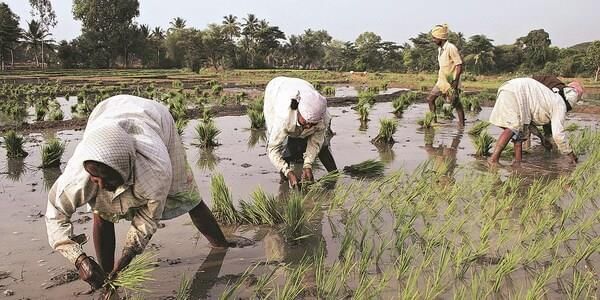UPSC Daily Current Affairs: 21st July 2025 | Current Affairs & Hindu Analysis: Daily, Weekly & Monthly PDF Download
GS1/Social Justice
Temples of Social Justice
Source: The Hindu
Why in News?
A recent political controversy has arisen in Tamil Nadu regarding the utilization of temple funds for constructing colleges. This debate reflects a broader discussion on social justice and the management of religious endowments.
Key Takeaways
- The Tamil Nadu Hindu Religious and Charitable Endowments Act, 1959 allows the use of temple surplus funds for public purposes, including education.
- The Self-Respect Movement has significantly influenced the governance of temples, advocating for the inclusion of marginalized communities.
- Debates around state control over religious institutions raise questions of accountability and transparency.
Additional Details
- Historical Context: The regulation of temples in Tamil Nadu began during the British colonial era with laws like the Madras Regulation VII of 1817 and the Religious Endowments Act of 1863, aimed at curbing mismanagement.
- Legal Framework: The Madras HRCE Act of 1951 established direct government control over temple administration, replacing hereditary trustees with state-appointed officers.
- Using temple funds for education is justified under the HR&CE Act, which aligns with the constitutional goals of equity and social upliftment, particularly for marginalized communities.
- The Self-Respect Movement, led by Periyar E.V. Ramasamy, challenged the dominance of Brahminical control in temple administration and promoted the idea that temple wealth should benefit the public.
- Constitutional Provisions: Article 25(2)(a) allows state intervention in religious matters for social welfare, while Article 26 protects the right of religious denominations to manage their affairs.
- Arguments for state regulation include ensuring accountability and preventing exploitation, while arguments for autonomy emphasize cultural integrity and religious freedom.
- A balanced approach of co-governance is suggested, allowing religious institutions to maintain spiritual autonomy while ensuring financial transparency and equitable use of resources.
This ongoing discourse on temple funds and social justice highlights the complex interplay between religion, governance, and the quest for equality in society.
GS2/Polity
Slovenia Approves Assisted Dying Law
Source: The Print
 Why in News?
Why in News?Recently, Slovenia has enacted legislation permitting assisted dying, aligning itself with a growing number of nations that grant terminally ill adults the right to end their lives in the face of unbearable suffering.
Key Takeaways
- Slovenia joins other countries in legalizing assisted dying.
- The law targets terminally ill adults experiencing unbearable suffering.
Additional Details
- Geography:Slovenia is located in Central and Southeastern Europe, bordered by four countries:
- Austrian border to the north
- Hungarian border to the northeast
- Italian border to the west
- Croatian border to the southeast
- Terrain:The country features a highly elevated landscape, with over 40% mountainous terrain, encompassing regions such as:
- The European Alps
- The karstic Dinaric Alps
- The Pannonian and Danubian lowlands and hills
- The Mediterranean coast
- Climate: Slovenia has a Mediterranean climate along its coast and a continental climate characterized by mild to hot summers and cold winters in the eastern plateaus and valleys.
- Natural Resources: Key resources include lignite, lead, zinc, building stone, hydropower, and forests.
- Economy: Slovenia boasts a developed market economy primarily focused on services and trade, with major industries such as automotive parts manufacturing, pharmaceuticals, and electrical appliances.
- Rivers: Significant rivers in Slovenia include the Drava and Sava.
- Capital City: The capital of Slovenia is Ljubljana.
In summary, Slovenia's new law on assisted dying is a significant development in the realm of healthcare and human rights, reflecting a broader trend towards recognizing individual autonomy in matters of life and death.
GS3/Science and Technology
Chikungunya: A Growing Concern
Source: TOI
Why in News?
The Ministry of Health in China has launched an emergency campaign to protect individuals at risk of Chikungunya fever, a mosquito-borne viral disease that is becoming increasingly prevalent.
Key Takeaways
- Chikungunya is caused by the Chikungunya Virus (CHIKV).
- Symptoms include fever and severe joint pain, often leading to misdiagnosis with diseases like dengue and Zika.
Additional Details
- Transmission: The disease is transmitted to humans through the bites of infected female mosquitoes, primarily Aedes aegypti and Aedes albopictus. These mosquitoes can also carry other viruses such as dengue and Zika. Importantly, the infection is not contagious between humans.
- Symptoms: The onset of fever is abrupt, typically accompanied by joint pain. Other common symptoms include muscle pain, headache, nausea, fatigue, and rash. Severe joint pain may last for several days but can persist for months or even years. Serious complications are rare but can occur, particularly in elderly individuals and young children.
- Treatment: Currently, there is no vaccine or antiviral treatment available for Chikungunya. Management focuses on alleviating symptoms.
In summary, as Chikungunya cases rise, public health efforts are crucial to manage and mitigate the spread of this disease.
GS3/Science and Technology
Gujarat’s Tribal Genome Sequencing Project
Source: The Hindu
Why in News?
Gujarat has initiated India’s first Tribal Genome Sequencing Project aimed at mapping the genetic data of tribal communities, significantly contributing to the national Genome India Project (GIP).
Key Takeaways
- This project was announced in Gujarat’s 2025-26 budget and is set to span over 5 years under the Gujarat Biotechnology Research Centre (GBRC).
- The focus is on genome sequencing of tribal communities, which constitute approximately 15% of Gujarat’s population (around 1 crore individuals).
- The project aims to address the under-representation of tribal genetic data, which previously had only about 100 samples from Gujarat.
Additional Details
- Sample Size: The project will involve 4,158 individuals, including 378 trio families, to create a reference genome panel of 2,000 samples.
- Data Collection: Data will include blood, stool, genealogical, physiological, and lifestyle information.
- Precision Medicine Applications: The project will facilitate early detection of conditions such as sickle cell anemia, G6PD deficiency, and BRCA-linked cancers.
- Gene-Trait Mapping: It aims to explore genetic links to specific traits, including agility and archery skills.
- Genomic Sampling Protocol: The project will employ SNP genotyping to filter closely related samples and will conduct Whole Genome Sequencing (WGS) on 2,000 diverse samples using Illumina NovaSeq 6000 technology.
- Data Security: The project will ensure privacy and anonymity through double encryption methods.
The Gujarat Tribal Genome Sequencing Project not only enhances the understanding of tribal genetics but also contributes to the broader objectives of the Genome India Project, which aims to map genetic diversity across the country.
About the Genome India Project (GIP)
- Initiation: Launched in January 2020 by the Department of Biotechnology (DBT).
- Structure: It is a multi-institutional consortium involving leading Indian research organizations.
- Objectives:
- Diversity Mapping: To decode genetic variation across the Indian population.
- Reference Panel: To build a Single Nucleotide Polymorphism (SNP)-based haplotype database for Indian genomes.
- Biobank Creation: To establish DNA reserves for research and therapeutic development.
- Key Achievements:
- Sequenced 10,074 genomes from 99 ethnic groups.
- Data is securely stored at the Indian Biological Data Centre (IBDC) in Faridabad.
- Insights gained have revealed rare traits that aid in the development of affordable diagnostics and predictive tools.
This initiative not only enhances the understanding of India's genetic landscape but also provides valuable insights for global genomics research and its applications in healthcare.
Related UPSC Question
With reference to agriculture in India, how can the technique of ‘genome sequencing’, often seen in the news, be used in the immediate future?
- Genome sequencing can be used to identify genetic markers for disease resistance and drought tolerance in various crop plants.
- This technique helps in reducing the time required to develop new varieties of crop plants.
- It can also be used to decipher the host-pathogen relationships in crops.
Select the correct answer using the code given below:
- (a) 1 only
- (b) 2 and 3 only
- (c) 1 and 3 only
- (d) 1, 2 and 3
GS3/Economy
Why Food Inflation May Remain Low
Source: Indian Express
Why in News?
India's consumer price index (CPI) inflation dropped to 2.1% in June, which is lower than the inflation rates in the US (2.7%) and the UK (3.6%). Notably, food inflation in India decreased by 1.1%, contrasting with increases of 3% in the US and 4.5% in the UK. This development marks the lowest retail and food inflation levels since January 2019, offering significant relief to the Reserve Bank of India, which faced high inflation rates throughout 2023-2024. The turnaround is attributed to a surplus monsoon in 2024, resulting in bumper kharif and rabi harvests that eased food prices from early 2025.
Key Takeaways
- India's food inflation rate is currently at its lowest since January 2019.
- The surplus monsoon in 2024 has significantly contributed to the decline in food prices.
- The government has ample reserves to manage food supply and control prices.
Additional Details
- Food Inflation in India: This term refers to the rate at which food item prices rise over a specific period, typically measured year-on-year. It is a crucial part of the Consumer Price Index (CPI), which monitors living cost changes.
- Key Features:
- Measured by the Ministry of Statistics and Programme Implementation (MoSPI) through the CPI.
- Covers essential food items like cereals, pulses, vegetables, fruits, milk, eggs, meat, and edible oils.
- Significantly impacts household budgets, especially for lower- and middle-income groups where food constitutes a major expense.
- Thanks to the 2024 monsoon, which was 7.6% above normal, there has been an improvement in soil moisture and water reserves, leading to a robust wheat harvest.
- Wheat stocks in government godowns increased from 282.61 lakh tonnes (lt) on July 1 last year to 358.78 lt, a four-year high. Procurement during the April–June marketing season surged to 300.35 lt, compared to 266.05 lt in 2024 and 187.92 lt in 2022.
- The successful 2025 monsoon has provided relief, with rainfall arriving early in Kerala on May 24 and cumulative rainfall reaching 7.1% above the long-period average (LPA) by July 20.
- Most regions have received above-normal rainfall, which has positively impacted sowing in major kharif crops, although some areas like Telangana and Andhra Pradesh experienced lower rainfall.
- Farmers are adapting by shifting to crops like maize, which is now more profitable due to its applications in ethanol, feed, and starch industries.
- Despite reduced planting of certain pulses and oilseeds, food inflation is expected to remain controlled due to record imports, including 72.56 lakh tonnes of pulses and 164.13 lt of vegetable oils in 2024-25.
- The government has extended zero-duty imports on key pulses until March 2026 and reduced duties on major edible oils, ensuring price stability.
- However, a potential fertilizer shortage poses risks to crop yields, as stocks of key nutrients have fallen due to reduced imports, particularly from China, causing prices to rise.
In conclusion, while food inflation in India is currently low due to favorable agricultural conditions and substantial reserves, challenges such as fertilizer shortages and changing crop patterns could introduce risks to future stability. Monitoring these factors will be crucial to maintaining food price stability in the coming months.
GS3/Environment
Discovery of Lyriothemis abrahami
Source: The Hindu
 Why in News?
Why in News?A new species of dragonfly, Lyriothemis abrahami, has recently been officially documented in Kerala, previously misidentified as Lyriothemis flava due to their superficial similarities.
Key Takeaways
- Location: Discovered in Kerala, India.
- Habitat: Breeds in small water pools found in tree holes.
- Distinct Features: Strong sexual dimorphism with uniquely shaped hamules in males and jet black bodies with yellow triangular spots in females.
- Distribution: Found in lowland rainforests to mid-elevation evergreen and deciduous forests, at elevations between 50 m and 1,100 m above sea level.
- Odonate Species Count: This discovery increases Kerala’s odonate species count to 191, including 78 endemic species.
Additional Details
- Ecological Significance: Lyriothemis abrahami serves as an indicator of forest health, highlighting the importance of habitat conservation for broader ecological benefits.
- Dragonflies, including this species, are apex predators in the insect world, playing a crucial role in regulating populations of many other insects, such as mosquitoes and other pests in urban areas.
The documentation of Lyriothemis abrahami underscores the rich biodiversity of Kerala and the importance of ongoing research in understanding and conserving these vital ecosystems.
GS3/Environment
India's Soil Crisis and the Imperative for Nutritional Agriculture
Source: TOI Why in News?
Why in News?
India has undergone a significant transformation from relying on food aid in the 1960s to becoming a leading exporter of rice and the operator of one of the largest food distribution programs globally (PMGKY). Despite this advancement in food security, a critical underlying issue related to soil health poses a serious threat to nutritional outcomes and long-term agricultural sustainability.
Key Takeaways
- India's transition from food deficit to surplus is marked by major milestones in agricultural productivity.
- Malnutrition remains a pressing issue, highlighting the inadequacies in nutritional security despite caloric sufficiency.
- Poor soil health contributes significantly to micronutrient deficiencies in crops.
- There is an urgent need for a paradigm shift towards nutritional agriculture focused on soil health.
Additional Details
- Transformation from Deficit to Surplus: In the 1960s, India was dependent on food aid, while by 2024-25, it exported 20.2 million tonnes of rice, displaying a remarkable turnaround.
- Food Security Initiatives: Programs like PM-Garib Kalyan Yojana (PMGKY) are in place to provide essential food grains to over 800 million people.
- Malnutrition Statistics: The National Family Health Survey (NFHS 5) indicates that 35.5% of children under five are stunted, and 32.1% are underweight, despite overall food sufficiency.
- Soil Health Crisis: According to the Soil Health Card scheme, less than 5% of soil samples are adequate in nitrogen, with only 20% being sufficient in organic carbon, leading to nutrient-deficient crops.
- Fertilizer Imbalance: In states like Punjab and Telangana, excessive nitrogen use is coupled with deficiencies in potassium, resulting in poor soil health and agricultural productivity.
- Environmental Impact: Inefficient fertilizer use leads to significant losses, with only 35-40% of nitrogen being absorbed, contributing to greenhouse gas emissions and groundwater contamination.
- Call for Change: There is a pressing need for customized nutrient planning based on soil health, rather than blanket fertilizer application.
To secure India's food and nutritional future, addressing the soil nutrient crisis is imperative. Sustainable agricultural practices must focus on both the quantity and quality of food, emphasizing the rejuvenation of soil as the foundation of human health and national prosperity.
GS2/International Relations
India Can Reframe the Artificial Intelligence Debate
Source: The Hindu
 Why in News?
Why in News?The rapid rise of artificial intelligence (AI), marked by the introduction of platforms like ChatGPT, has transformed AI from a niche research area into a significant global topic. As leaders respond to the implications of AI, global summits have emerged to discuss its governance. With the upcoming AI Impact Summit in New Delhi in February 2026, India has a unique opportunity to play a pivotal role in shaping the international AI landscape.
Key Takeaways
- India's strategic position allows it to bridge diverse geopolitical interests in AI governance.
- India's democratic approach to AI consultation invites broad participation from various sectors.
- Proposed initiatives aim to enhance accountability, representation, and safety in AI development.
Additional Details
- Fractured Geopolitical Landscape: The Paris AI Summit in February 2025 ended in discord, highlighting divisions among nations like the US, UK, and China. India can mitigate these tensions by promoting inclusivity in AI governance.
- Democratic Approach: India's Ministry of Electronics and Information Technology launched a nationwide consultation to gather input from students, researchers, and civil society, focusing on inclusive growth, development acceleration, and environmental protection.
- Pledges and Accountability: The summit can encourage countries to make measurable commitments, such as improving energy efficiency in data centers and expanding AI educational programs in rural areas.
- Elevating the Global South: India aims to ensure equitable representation for the Global South, proposing initiatives like the AI for Billions Fund to support underserved communities.
- Safety Standards: India could lead the creation of a Global AI Safety Collaborative to develop shared safety benchmarks and evaluation tools.
- Balanced Regulation: India may propose a voluntary code of conduct for AI that promotes accountability while allowing innovation to thrive.
- Preventing Fragmentation: Ensuring a broad and inclusive summit agenda can help prevent geopolitical divisions from splintering the AI ecosystem.
In conclusion, the AI Impact Summit of 2026 offers India a significant diplomatic and technological opportunity. By fostering transparency, inclusivity, shared safety standards, and a commitment to equitable governance, India can emerge as a leader in the global AI dialogue, reinforcing its role as a bridge-builder in an increasingly divided world.
GS3/Science and Technology
INVICTUS: Europe’s New Hypersonic Research Initiative
Source: European Space Agency
Why in News?
The European Space Agency (ESA) has recently collaborated with the UK-based company Frazer-Nash to launch the INVICTUS research programme, aimed at advancing hypersonic technologies.
Key Takeaways
- INVICTUS focuses on developing technologies for reusable vehicles that can launch horizontally.
- The programme is financed through ESA’s General Support Technology Programme (GSTP) and the Technology Development Element (TDE).
- The research will involve a fully reusable experimental aerospace vehicle capable of flying at speeds of Mach 5 (five times the speed of sound).
- The vehicle aims to demonstrate critical technologies necessary for sustained hypersonic flight within the atmosphere.
Additional Details
- Vehicle Capabilities: The INVICTUS vehicle will be designed to be upgradable, allowing for the interchange of materials, software, and propulsion systems throughout various flight test campaigns.
- Technological Significance: The INVICTUS programme will validate the use of a hydrogen-fuelled precooled air-breathing propulsion system for both horizontal take-off and hypersonic flight.
- INVICTUS builds on previous technology advancements managed by ESA, providing opportunities for industry, agencies, and academia to test future hypersonic technologies in relevant environments.
Overall, the INVICTUS programme represents a significant step forward in hypersonic research, promising advancements that could shape the future of aerospace technology.
GS3/Defence & Security
Army’s AI Roadmap for Ops by 2026-27
Source: Indian Express
Why in News?
The Indian Army has developed a detailed strategy to integrate Artificial Intelligence (AI), Machine Learning (ML), and Big Data Analytics into its operations by the year 2026-27. This roadmap is aimed at enhancing operational effectiveness and strategic capabilities across various military functions.
Key Takeaways
- The roadmap focuses on key areas such as drone swarming, real-time battlefield surveillance, combat simulations for troop training, information warfare, and data-driven decision-making.
- AI integration is expected to improve battlefield awareness, accelerate decision-making, and modernize military operations.
Additional Details
- Key Benefits of Military AI:
- Faster, Smarter Decisions: AI enhances battlefield analysis, allowing commanders to make quicker decisions based on real-time sensor data.
- Force Multiplication and Efficiency: Autonomous systems can undertake repetitive or hazardous tasks, improving logistics and resource allocation with less manpower.
- Reduced Risk to Soldiers: AI-driven drones can carry out high-risk missions like reconnaissance and mine-clearing, thereby saving human lives.
- Cost-Effectiveness and Scalability: AI solutions, particularly in drones and software, are often cheaper and easier to scale compared to traditional systems.
- Greater Precision and Less Collateral Damage: AI can enhance targeting accuracy and minimize civilian casualties if the systems are properly trained.
- Strategic Deterrence and Wargaming: Advanced AI can simulate war scenarios, providing military planners with strategic advantages.
- Major Risks of Military AI:
- Loss of Human Control: Autonomous systems may operate at machine speed, potentially leading to unintended conflicts.
- Cyber Vulnerabilities: AI systems can be compromised, leading to misidentification or system failures.
- Unintended Civilian Harm: Errors in AI systems may result in wrongful targeting in complex environments.
- Bias and Authoritarian Misuse: Flawed data can lead to discrimination or unlawful uses of AI.
- Arms Race and Strategic Instability: A global AI arms race could lead to rushed deployments and increased tensions.
The Indian Army's roadmap aims to enhance battlefield awareness and decision-making speed while modernizing various military functions, accelerated by lessons from recent operations. The immediate priority is to employ AI tools for real-time battlefield awareness, utilizing technologies like text summarizers, AI-driven chatbots, and data fusion tools to integrate information from multiple sources. Furthermore, AI will be integrated into new equipment and legacy platforms, with an emphasis on collaboration with industry and academia to foster innovation.
GS3/Science and Technology
Piezo-Photocatalytic Water Filter
Source: Science Direct
Why in News?
Indian scientists from INST Mohali, IIT-Dharwad, and IIT-Kharagpur have developed an innovative, cost-effective, and reusable water filter that effectively removes toxic industrial dyes through a process known as piezo-photocatalysis.
Key Takeaways
- The water filter utilizes a combination of sunlight and mechanical vibrations to function efficiently.
- It has shown promising results in laboratory tests, specifically in the removal of harmful dyes from water.
Additional Details
- Material Used: The filter is constructed using 3D-printed polylactic acid (PLA) sheets, which are biodegradable. These sheets are coated with bismuth ferrite (BFO) nanoparticles.
- Working Mechanism:The filter operates through two main processes:
- Photocatalysis: This process utilizes sunlight to decompose dye molecules.
- Piezoelectric Effect: It harnesses vibrations (such as ultrasound) to enable functioning even in the absence of light.
- Performance: The filter can be reused up to 5 times with only a 3% loss in efficiency. Laboratory tests have demonstrated a 99% removal rate for Congo Red dye and a 74% removal rate for Methylene Blue within 90 minutes.
- Significance: This technology is eco-friendly as it removes toxic dyes without the use of harmful chemicals or electricity.
- Cost-Effectiveness: It is a more affordable and safer alternative compared to traditional ozone or chemical-intensive treatment methods.
- Green Energy Use: The filter operates on renewable energy sources, utilizing sunlight and mechanical vibrations, thus requiring no external power supply.
- Policy Alignment: The development aligns with the goals of initiatives such as Namami Gange, Jal Nigam, and Aatmanirbhar Bharat.
- Scalability: This technology is ideally suited for deployment near textile treatment plants, promoting sustainable practices in water filtration.
This innovative approach offers a promising solution for water purification, addressing environmental concerns while supporting national initiatives aimed at sustainability.
|
38 videos|5258 docs|1111 tests
|
FAQs on UPSC Daily Current Affairs: 21st July 2025 - Current Affairs & Hindu Analysis: Daily, Weekly & Monthly
| 1. What is the significance of the Assisted Dying Law in Slovenia? |  |
| 2. How does Chikungunya spread and what are its symptoms? |  |
| 3. What are the objectives of Gujarat’s Tribal Genome Sequencing Project? |  |
| 4. How can India address its soil crisis and promote nutritional agriculture? |  |
| 5. What role does artificial intelligence play in modern defense strategies? |  |
















